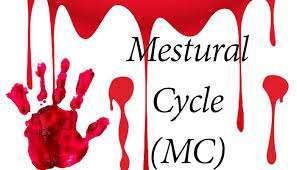
Everyone should know full forms of words related to everyone. This page provides best full form and tells what is the full form of MC. So your search for MC full form is over. Page is dedicated to a basic full form. Go through and get meaning of MC
MC — Menstrual Cycle
MC Full-Form stands for Menstrual Cycle. MC is the regular change that takes place regularly in the reproductive system of females. The pregnancy becomes possible due to these changes. An MC can range from twenty-seven to thirty-seven days. There are many things that affect this cycle, such as fertility medication, stress, travel, illness, etc. The irregularity in the
Every month, the ovaries start to ripen numerous follicles. Due to this, days one to fourteen are referred to as the follicular phase. In both ovaries, each follicle consists of tissue that contains estrogens in large amounts. In each cycle, the number of follicles that becomes active differs. However, one follicle usually dominates the others in every cycle, and one egg is produced by it. The level of estrogen rises with the ripening of the follicles. Before the cycle approaches the middle stage, the follicle-stimulating hormone (FSH) and luteinizing hormone (LH) are released by the pituitary gland that triggers the ovulation of the follicle that is still dormant. The level of estrogen hormones continues to increase.
The luteal phase is the term used for indicating 14th day to the 28th day of the cycle. During this phase, the levels of the estrogen hormones fall, and the same of the progesterone hormone rises. The ovulation process occurs around the fourteenth day. The follicle releases the egg, which then travels through the fallopian tube and reaches the uterus. This results in the secretion of a number of hormones, and estrogen is one of them. These hormones thicken the lining of the uterine for supporting pregnancies. There are many indications of ovulation, and some of them are a twinge in the abdomen (mittelschmerz), tenderness in nipples and discharge of vaginal mucus.
During the ovulation time, the fertility of women remains high for twenty-four to twenty-eight hours. The level of the progesterone hormones also remains high only if the egg is fertilized. The unfertilized egg is reabsorbed, and the level of progesterone decreases. This level reaches its lowest value until the 28th day, and then periods (that is, monthly cycle) occur. The cycle then repeats itself the occurrence of this point always takes fourteen days after the ovulation process.